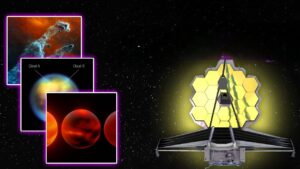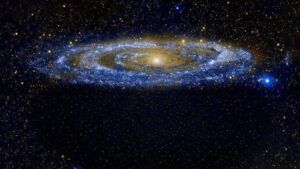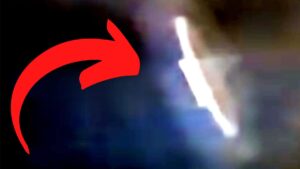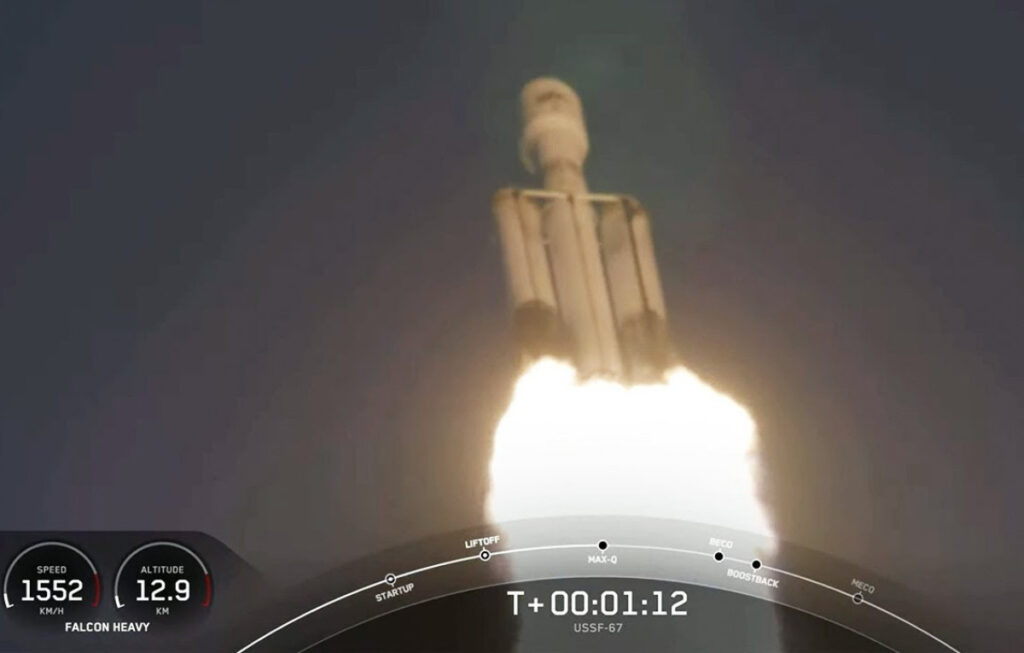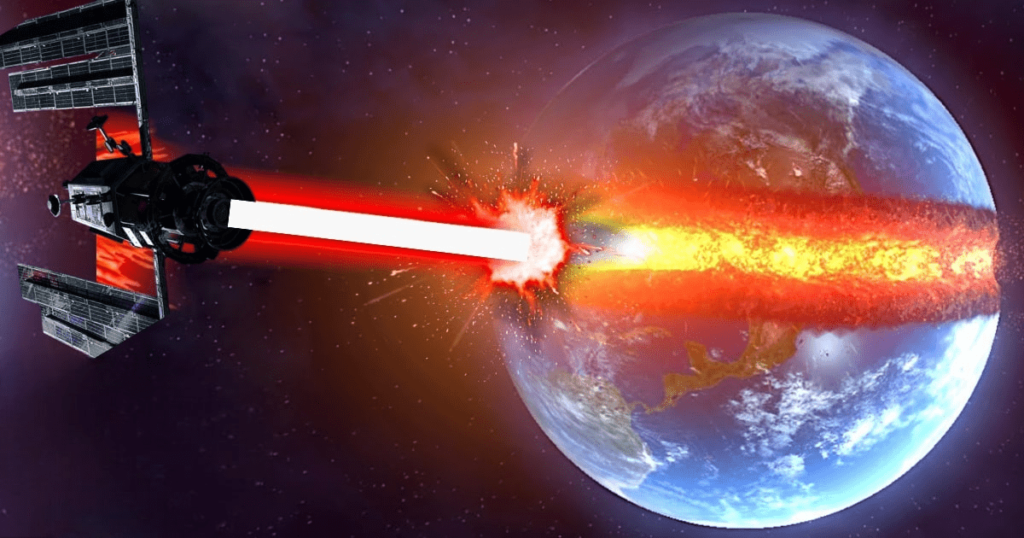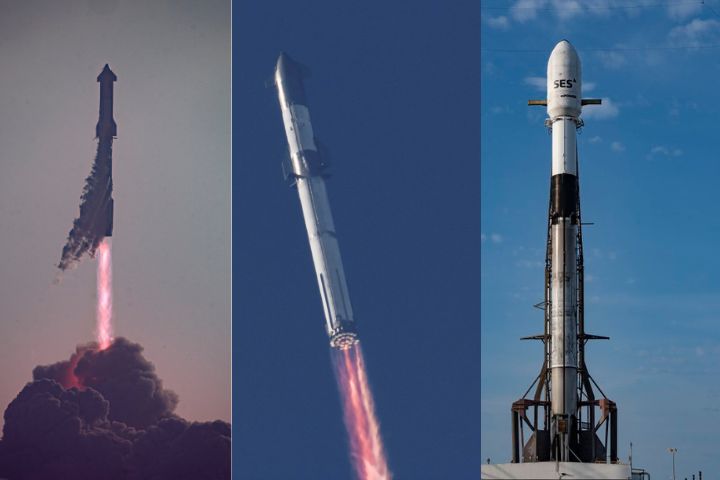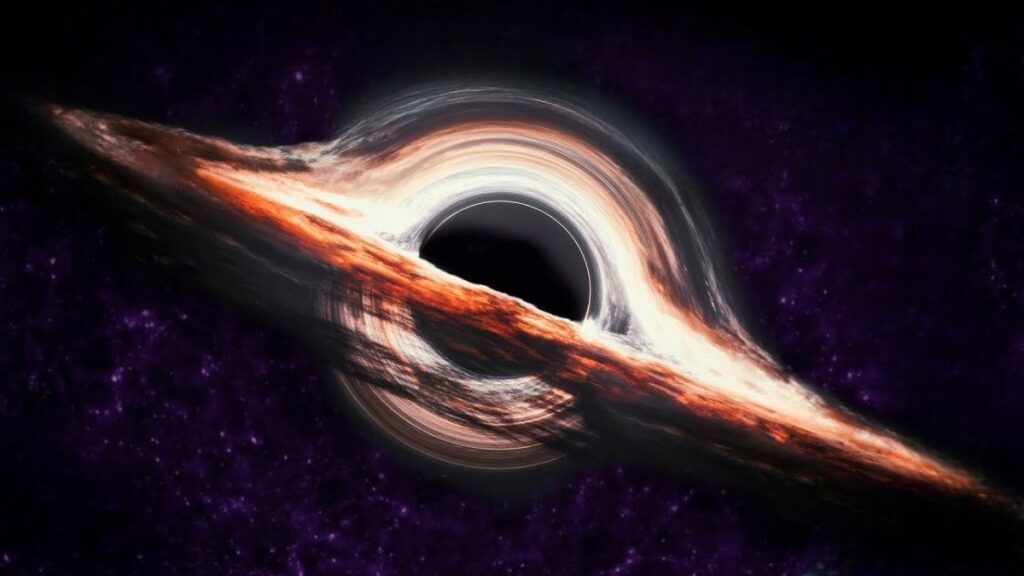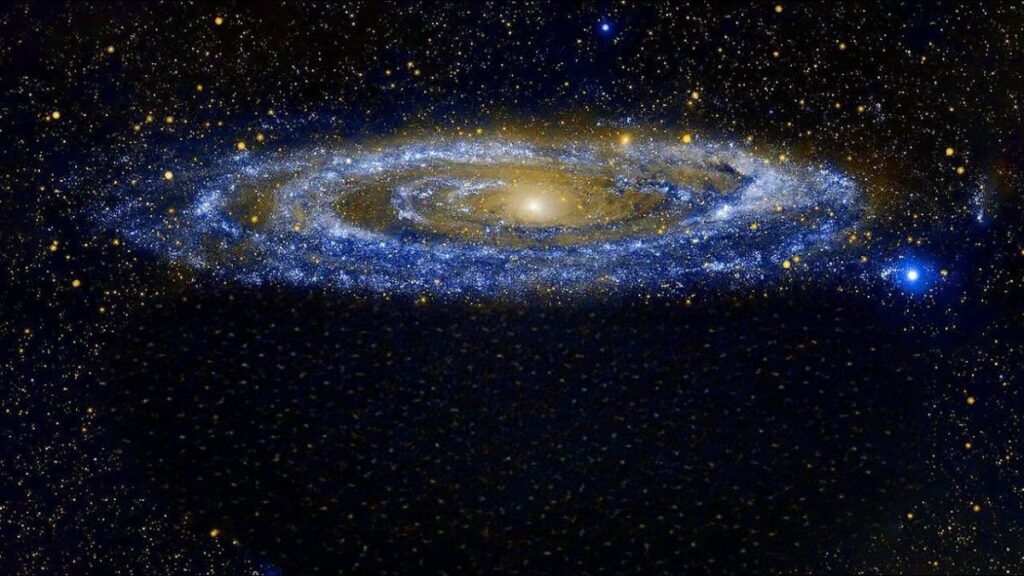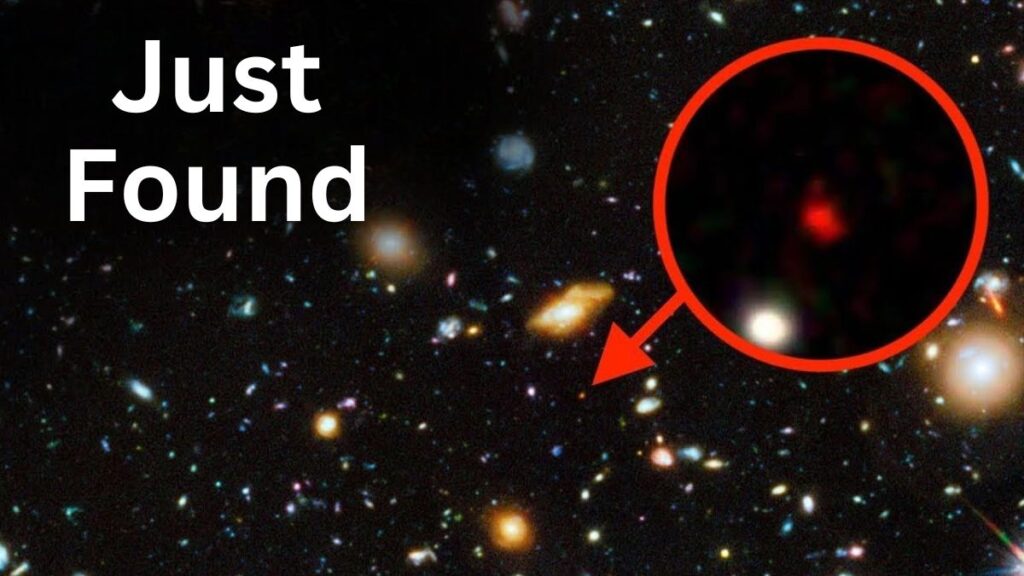
When you look up at the sky on a clear night, you see lots and lots of stars. Many people do not know how old and far these stars and their respective galaxies are. However, astronomers have recently discovered the most distant galaxy ever, despite some challenges they have faced while studying it. What is this galaxy? How far away is it? What issues do scientists have with it? Stay tuned as we delve into the most distant galaxy observed by astronomers and the problems they are trying to solve.
Galaxies are some of the most awe-inspiring objects in the cosmos. In addition to their massive size, there are so many of them. In fact, the more we look into space, the more galaxies we see. According to a study from 2016, the observable universe contains two trillion (or two million million) galaxies. Some of these distant systems resemble our own Milky Way galaxy, while others are quite different. It is interesting to note that prior to the 20th century, we did not know that galaxies other than the Milky Way existed. Astronomers referred to these distant objects as nebulae because they appeared as hazy clouds.
However, astronomer Edwin Hubble demonstrated in the 1920s that the Andromeda nebula was a galaxy in its own right. Because it is so far away, light from Andromeda takes more than 2.5 million years to reach us.
Despite its enormous distance, Andromeda is the nearest large galaxy to our Milky Way and is bright enough to be seen with the naked eye in the northern hemisphere, if you know where to look.
In 1936, Hubble introduced a method for classifying galaxies into four types: spiral galaxies, lenticular galaxies, elliptical galaxies, and regular galaxies. Spiral galaxies make up more than two-thirds of all observed galaxies and are characterized by a flat, spinning disc surrounded by spiral arms. The spinning motion of these galaxies, which can reach hundreds of kilometers per second, causes mass in the disks to form a distinct spiral shape, resembling a cosmic pinwheel. Our Milky Way is a spiral galaxy, with a linear, starry bar at its center.
Elliptical galaxies are shaped, as their name implies, like ellipses and are generally round, but can stretch longer along one axis than the other, giving some the appearance of a cigar. These galaxies have a lot of older stars, but not much dust or other interstellar matter. The stars in elliptical galaxies orbit the galactic center in random directions, similar to those in the disks of spiral galaxies.
Lenticular galaxies, such as the well-known Sombrero Galaxy, are located between elliptical and spiral galaxies. They are referred to as lenticular because they resemble lenses. Like spiral galaxies, they have a thin, rotating disc of stars and a central bulge, but no spiral arms.
However, there are galaxies that simply defy classification. They do their own thing. Irregular galaxies are galaxies that are not spiral, lenticular, or elliptical. Regular galaxies, such as the Large and Small Magellanic Clouds that flank our Milky Way, appear misshapen and lack a distinct form. Often, this is due to their proximity to other galaxies. These galaxies are dense with gas and dust, making them excellent nurseries for the formation of new stars.
Galaxies are some of the furthest objects from us, but which galaxy is actually the farthest, as measured from our earthly perspective?
That honor went to HD1. This ultra-remote galaxy, discovered by Japanese astronomers using a slew of telescopes around the world, is a whopping 13.5 billion light years away, only 300 million years after the alleged big bang that created the universe. HD1 is thought to be home to the universe’s very first stars, known as population III stars, which had never been observed before. HD1 is a long way away.
HD1 surpasses the previous record of 13.4 billion light years, held by GNZ 11, discovered in 2017, and brings astronomers even closer to the Big Bang. In fact, this is time travel on steroids because HD1 no longer exists, but its light continues to travel in our direction. HD1 was discovered by analyzing 1200 hours of data from the Subaru telescope, Vista telescope, UK infrared telescope, and Spitzer Space Telescope. Finding HD1, located amongst 700,000 other objects, was extremely difficult. However, HD1’s red color surprisingly well matched the expected characteristics of a galaxy 13.5 billion light years away, giving scientists goosebumps when it was found.
Because very old light is stretched over time as it travels through space, HD1 is red. The wavelength of red light is the longest because the universe is expanding. Very distant galaxies appear to be moving away from us faster than closer galaxies, as a result their light is even redder. However, what shocked scientists about HD1 is its extreme luminosity. It is extremely bright in ultraviolet light, leading them to believe it is a very active, star-forming galaxy. It is estimated that more than 100 stars are formed each year in HD1, however, this is 10 times faster than scientists predicted. Could HD1 be producing an earlier generation of stars that astronomers are unaware of, the very first population of stars that formed in the universe? These stars were more massive, more luminous, and hotter than modern stars.
Along with the 1200 hours of observation with the Subaru telescope, Vista telescope, UK infrared telescope, and Spitzer Space Telescope, scientists also used data from the XMM-Newton spacecraft and the Chandra X-ray Observatory to study HD1. By analyzing the data, they were able to determine the distance and characteristics of HD1. Further study of HD1 could provide insights into the early universe and the formation of the first stars.
If we assume that the stars produced in HD1 are these first, or population III, stars, then their properties become more easily explained. In fact, population III stars can produce more UV light than normal stars, which could explain HD1’s extreme ultraviolet luminosity. The second theory is that a supermassive black hole may exist in the galaxy. It would have to be 100 million times the mass of our sun. In comparison, the supermassive black hole at the center of the Milky Way is approximately 4 million times the mass of our sun. The supermassive black hole would consume surrounding matter while emitting high-energy photons. If it is a supermassive black hole, it will be the earliest ever discovered, existing much closer to the Big Bang than the current record holder.
A black hole in HD1 must have grown at an unprecedented rate from a massive seed a few hundred million years after the Big Bang. It appears that nature is more imaginative than we are, once again.
Ascertaining the reason galaxy HD1 is so bright is a difficult task. One scientist compared it to attempting to guess a ship’s nationality based on the flag it flies while ashore, with the vessel in the middle of a gale and dense fog. Some colors and shapes of the flag can be seen, but not all of them. In the end, it is a long game of analysis, and scientists can only play by excluding implausible scenarios.
Meanwhile, the emergence of the James Webb Space Telescope means the reign of HD1 as the farthest galaxy may be cut short. A few months after its commissioning, the JWST has spotted three more likely and more exciting candidates. Isn’t astronomy exciting? The galaxy is known as GN-z13 and dates back to 300 million years after the Big Bang, which is about 100 million years earlier than anything previously discovered. GN-z13 wasn’t the only GN-z galaxy astronomers were studying. In fact, they were also looking at galaxy GN-z11, which could be one of the first galaxies ever discovered.
Both of these galaxies are small in comparison to the galaxies we see today, such as our own Milky Way. The Milky Way is approximately 100,000 light years across. GN-z13 and GN-z11, on the other hand, are 1600 and 2300 light years across, respectively. Both galaxies are about a billion suns in size, in comparison to our Milky Way galaxy, which is between 100.
Scientists do not believe that the discovery of this second, more distant galaxy was purely coincidental. These two objects have already imposed new constraints on galaxy evolution during the cosmic dawn epoch, roughly 50 million to 1 billion years after the Big Bang. They suggest the discovery of GN-z11 was not accidental, but there is most likely a population of UV luminous sources with extremely high star formation efficiencies. In other words, there are likely more galaxies at their distance that are forming stars, which the JWST will be able to detect due to its infrared sensitivities.
The scientists combed through this distant universe’s infrared data, looking for telltale signs of extremely distant galaxies. Although photons, or energy packets, are absorbed by the neutral hydrogen of the universe that lies between the object and the observer below a specific infrared wavelength threshold, they were able to detect where these photon drop-offs occurred by using data collected through different infrared filters pointed at the same region of space. From this, they inferred the presence of these most distant galaxies.
The team intends to request telescope time from JWST administrators in order to conduct spectroscopy, an analysis of light that reveals detailed properties to determine its precise distance. However, the team has already discovered some unexpected properties even before the approval to use the JWST is given. For example, given how soon after the Big Bang it formed, the galaxy has the mass of a billion suns, which is potentially very surprising.
Something scientists still don’t really understand, but why is the jwst so good at detecting far away objects like galaxies? How the telescopes can’t detect certain wavelengths of light that are unable to pass through Earth’s dense atmosphere can now be seen using space-based telescopes. The Hubble Space Telescope was designed and optimized to operate in both the ultraviolet or UV and visible regions over the electromagnetic spectrum. The jwst was designed to use a wide spectrum of infrared light.
This is one of the primary reasons the jwst can see further back in time than Hubble. Galaxies emit a wide range of electromagnetic wavelengths from gamma rays to radio waves into everything in between. All of these provide important information about the various physics that occur in a galaxy. When galaxies are close to us, their light hasn’t changed much since it was emitted and we can probe a wide range of wavelengths to learn more about what’s going on inside them. We no longer have that luxury when galaxies are extremely distant. The light from the most distant galaxies has been stretched to longer and redder wavelengths as the universe was expanded. This means that some of the light that was visible to our eyes when it was first emitted has since lost energy due to the expansion of the universe.
It is now in an entirely different part of the electromagnetic spectrum. The term a cosmological redshift refers to this phenomenon and it is here that the 10 billion jwst truly shite. Jwst’s ability to detect a wide range of infrared wavelengths allows it to see galaxies that Hubble could never see. When this capability is combined with the jwst’s massive mirror and superb pixel resolution, the result is the most powerful time machine in the known universe. Will be able to capture extremely distant galaxies as they were only 100 million years after the big bang, which occurred around 13.8 billion years ago, using the jwst. As a result, light from 13.7 billion years ago will be visible to us.
however what is about to puzzle you is that those galaxies are not 13.7 billion light years away but much further away today.
The actual distance between those galaxies is 46 billion light years. How come this disparity is entirely due to the expanding universe and it makes working on a very large scale difficult because of something known as dark energy. The universe is expanding, it is thought to be a universal constant acting in all areas of space-time equally, and the more the universe expands, the more powerful Dark Energy becomes. This is why, despite it being 13.8 billion years old, the universe is actually 93 billion light years across. But what is the third Galaxy that jwst discovered that might be the farthest from us? The galaxy known as Sears 93316 was photographed as it existed just 235 million years after the big bang using jwsts near infrared. The new result has already broken a previous provisional record set by glass z13. The newly discovered galaxy has a record-breaking redshift of 16.7, which means its light has been stretched to be nearly 18 times redder than it would have been if the expanding Universe wasn’t pushing the Galaxy away from us.
Amazingly, the researchers who discovered the image were not even looking for the most distant Galaxy ever recorded. Instead, they were compiling a list of 55 early galaxies, 44 of which had previously been observed, to investigate how bright they were at various times after the big bang, a measure that will provide important insight into the evolution of the young universe. To confirm that the Galaxy is as old as its redshift suggests, astronomers will use spectroscopy to examine the magnitude of light across a range of wavelengths for all of the galaxies discovered so far by jwsts near infrared spectrograph instruments.
This device employs tiny 0.1 millimeter long (0.2 millimeter wide) adjustable mirrors that only let in light from Target galaxies while filtering out background radiation, allowing astronomers to categorize stars in a galaxy by color. This effort will reveal not only the age of the light from galaxies, but also their chemical composition, size, and temperatures. So is glass z13 or the cs-93316 the oldest Galaxy ever discovered, or the youngest? Well, we are looking back in time at something that existed a long time ago, billions of years before us.
In that sense, these galaxies are very old. However, we are also looking back in time to when the universe was very young, only a few hundred million years after the big bang.
Therefore, these galaxies were young and one of the first galaxies to form. In that sense, these galaxies are both the oldest and the youngest we’ve ever seen. However, these galaxies, whether old or young, will help astronomers understand the very first galaxies in the universe when they appeared, how they formed, what happened to them, and so much more.
Let’s hear what you think of these distant galaxies in the comments section below.
Explore:
